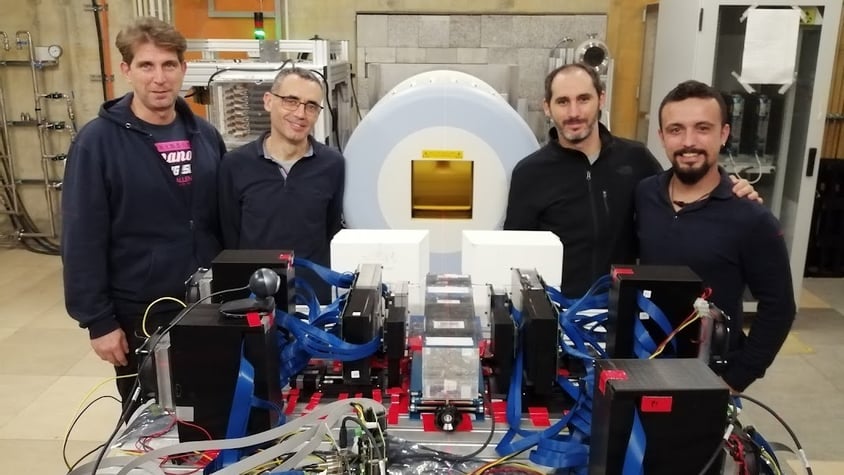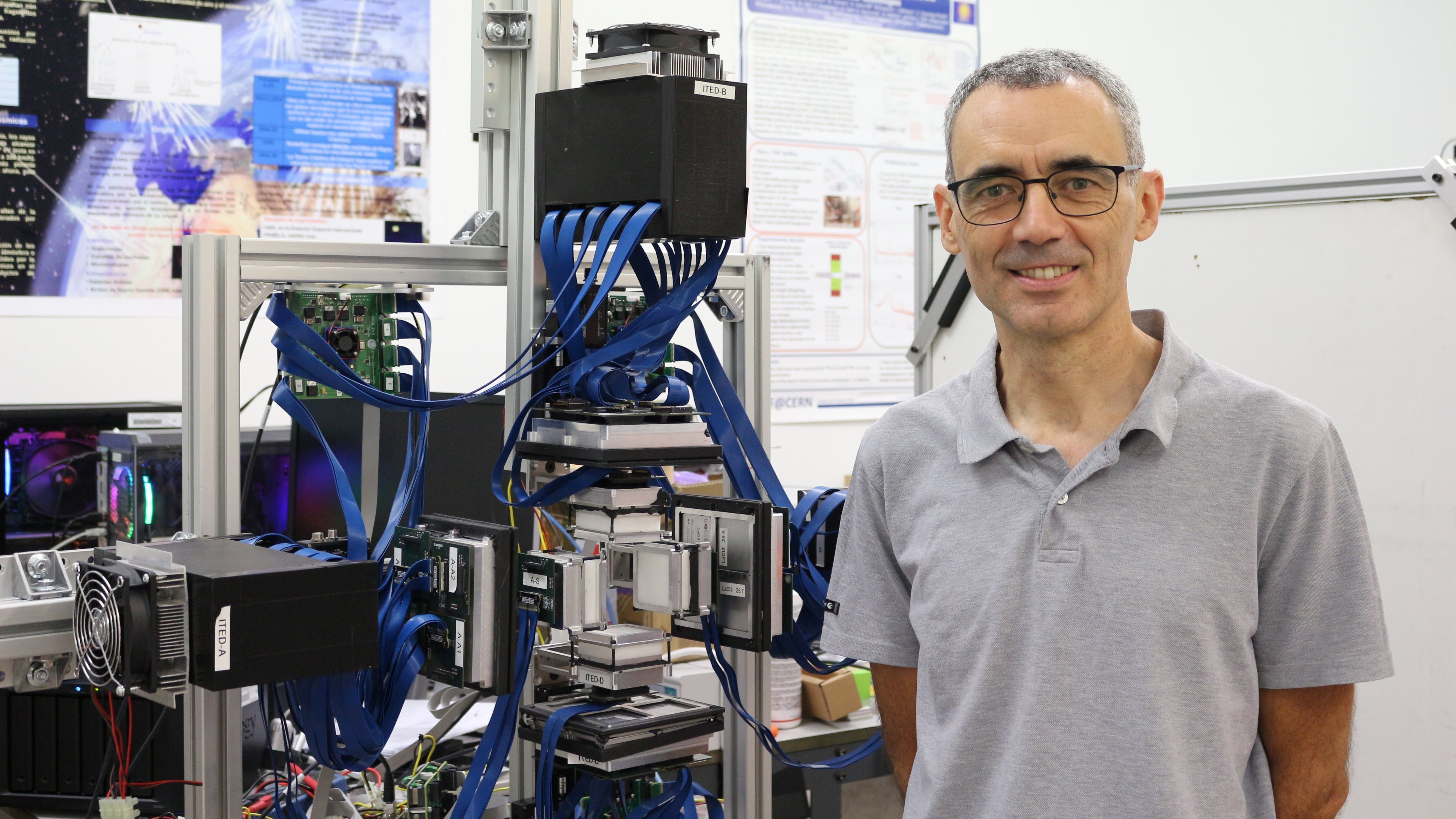A research group at the Institute of Corpuscular Physics (IFIC, CSIC-UV), located in the scientific-academic area of the University of Valencia Science Park, has just obtained one of the prestigious grants awarded by the European Research Council (ERC) to bring to society innovative technological developments arising from basic science. Specifically, the aim is to develop new imaging technologies to guide surgeries and to monitor new cancer treatments. These devices are based on techniques developed at CERN to study the nuclear processes occurring in the interior of stars
The project led by scientist César Domingo Pardo from the Institute of Corpuscular Physics (IFIC) and developed at the University of Valencia Science Park (PCUV), and which has just received ERC Proof of Concept funding, stems from a previous study also led by the CSIC researcher in the Gamma Spectroscopy and Neutron Group at IFIC. It is HYMNS, which developed a new technique and advanced instrumentation for measurements of astrophysical interest at CERN's n_TOF facility.
In recent years, Domingo's team has tried to reproduce in the laboratory the formation of heavy elements in stars, creating a 'thermometer' to reveal the temperature inside red giant stars when they form the elements of the periodic table heavier than iron.
In the framework of the new project, under the acronym AMA, (Advanced imaging system for Medical Applications), endowed with 150,000 euros in the last ERC Proof of Concept call, the group will apply the techniques previously developed to improve imaging systems used in medicine with a double objective: "On the one hand, we will explore the applicability of advanced gamma imaging cameras in radioguided surgery," explains Domingo.
Their advantage for clinical applications lies in their high detection efficiency and image resolution, the researcher emphasizes, "which makes it possible to obtain information in less time compared to conventional systems. The system developed allows the simultaneous application of two imaging techniques, known as PET and Compton, which enables the simultaneous visualization of different radiotracers, as well as the exploitation of specific radionuclides with multiple radiation emission for greater image resolution.
"Its advantage for clinical applications lies in its high detection efficiency and image resolution, which allows obtaining information in a shorter time compared to conventional systems", César Domingo Pardo, IFIC researcher
Artificial Intelligence and cancer treatments
They will also apply image reconstruction algorithms and Artificial Intelligence techniques known as Machine Learning, whose development is led by IFIC researcher Javier Balibrea. This will be developed in collaboration with experts in nuclear medicine from Ascires, a biomedical group pioneer in Spain in Diagnostic Imaging, Nuclear Medicine, Medical Genetics and Image-guided Radiation Oncology.
The second objective is to explore the applicability of this type of image sensors for monitoring cancer treatments based on boron neutron capture therapy. This technique consists of applying a beam of neutrons to deposit radiation in a very localized manner in tumor cells, which have previously absorbed a drug enriched in boron (borophenylalanine or BPA). A system patented by the IFIC team, co-owned by CSIC and the University of Valencia, and whose development is led by Jorge Lerendegui, also an IFIC scientist, will be applied here.
 From left to right: Ion Ladarescu, César Domingo, Javier Balibrea and Jorge Lerendegui. Photo: IFIC
From left to right: Ion Ladarescu, César Domingo, Javier Balibrea and Jorge Lerendegui. Photo: IFIC
"This innovative system allows both gamma radiation visualization and simultaneous neutron imaging, which can be an important advantage in this type of treatment by opening up the possibility of performing real-time dosimetry during therapy," Domingo explains. The preliminary measurements will be carried out at the ILL-Grenoble facility (France), in collaboration with other research groups at the University of Granada.
"This innovative system allows both gamma radiation visualization and simultaneous neutron imaging, which can be an important advantage in this type of treatment by opening up the possibility of real-time dosimetry during therapy"
The project also counts with the participation of the Instituto Tecnológico del Plástico (AIMPLAS). The Scientific Unit for Business Innovation (UCIE) of the Agència Valenciana de la Innovació (AVI) at IFIC will carry out a market study and explore its commercialization, with the collaboration of the transfer and innovation offices of CSIC and UV.


